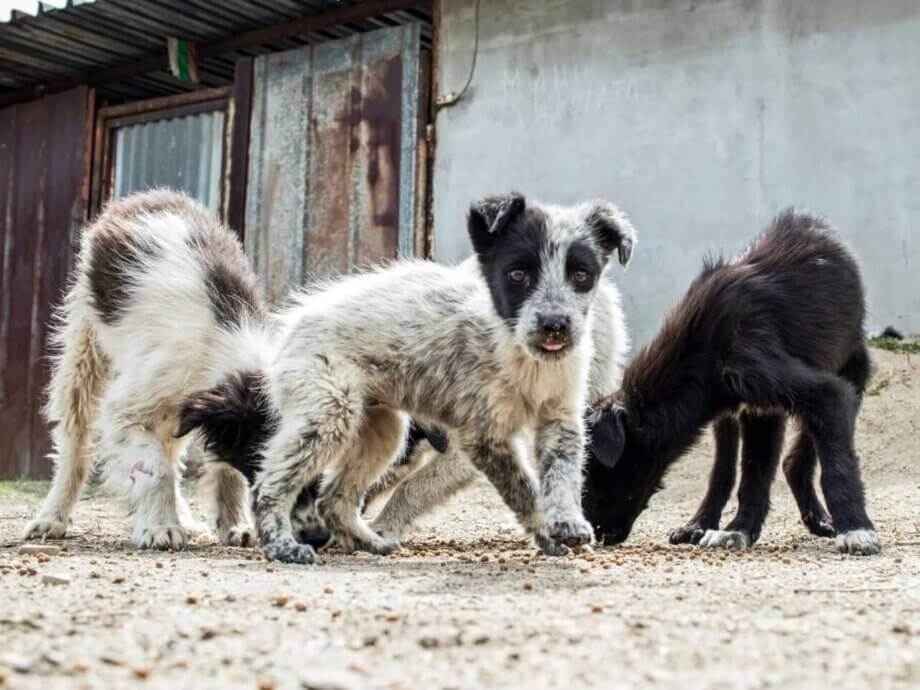The Hidden Dangers of Overenthusiastic Animal Welfare Activism in Bangladesh
In the bustling streets of Bangladesh, the sight of stray animals—dogs, cats, and others—often stirs a deep sense of compassion in passersby. Many feel compelled to help, whether by offering food, rescuing an injured animal, or sharing their efforts on social media. Yet, beneath these acts of kindness lies a complex and often uncomfortable truth: not all help is helpful. In fact, well-meaning but misguided animal welfare activism can sometimes do more harm than good, exacerbating the very problems it seeks to solve.
- The Hidden Dangers of Overenthusiastic Animal Welfare Activism in Bangladesh
- Why Good Intentions Aren’t Always Enough
- The Problem with Performative and Seasonal Activism
- Legal Framework: The Animal Welfare Act 2019
- Controversial Interventions: The Case of Dhaka’s Stray Dogs
- Understanding the Root Causes: Culture, Stigma, and Urbanization
- Systemic Solutions: What Really Works?
- The Unseen Cost of Half-Baked Compassion
- Looking Forward: Building a Compassionate and Effective Animal Welfare Movement
- In Summary
Bangladesh, like many developing countries, faces significant challenges in animal welfare. The country’s growing urban population, limited resources, and evolving cultural attitudes toward animals have created a landscape where both neglect and overzealous intervention can have unintended consequences. Understanding these challenges is crucial for anyone who wishes to make a real, lasting difference for the country’s animals.
Why Good Intentions Aren’t Always Enough
Many animal lovers in Bangladesh believe that feeding stray animals or rescuing them from the streets is the ultimate act of compassion. While these actions are often well-intentioned, experts warn that they can inadvertently worsen the situation if not paired with long-term solutions. A veterinarian in Dhaka recently remarked:
“The biggest threat to animal welfare in Bangladesh are the overenthusiastic animal welfare activists.”
This sentiment is echoed by leaders of major animal welfare organizations in the country. The core issue is that many activists focus on immediate relief—feeding, rescuing, or sheltering animals—without addressing the root causes of the stray animal crisis. This approach, while emotionally satisfying, can lead to a cycle of suffering.
For example, feeding stray animals without implementing sterilization programs leads to population growth. More animals are born into harsh conditions, increasing the number of starving, sick, or abused strays. Similarly, impulsive rescues without a plan for long-term care or adoption often result in animals being abandoned again, sometimes in unfamiliar and hostile environments. This can be even more traumatic than never having been rescued at all.
The Problem with Performative and Seasonal Activism
Another challenge is the rise of performative or seasonal activism. Many people engage in animal welfare activities during certain times of the year—such as religious festivals involving animal sacrifice—or when a particular case goes viral online. While these efforts can raise awareness, they rarely lead to systemic change.
As highlighted in The Daily Star, the focus on short-term or high-profile interventions often overshadows the ongoing, less visible work required to improve animal welfare. This includes advocating for better farming practices, humane treatment of livestock, and the enforcement of animal protection laws. Without sustained commitment, the underlying issues remain unaddressed.
Legal Framework: The Animal Welfare Act 2019
Bangladesh has made significant strides in establishing a legal framework for animal welfare. The Animal Welfare Act 2019 replaced the outdated Cruelty to Animals Act of 1920, introducing comprehensive guidelines for the care, transportation, and slaughter of animals. The Act also established the National Animal Welfare Council to oversee its implementation and promote animal welfare nationwide.
Key provisions of the Act include:
- Prevention of cruelty to animals, including bans on unnecessary pain, suffering, and abuse.
- Regulation of animal transportation, ensuring animals have adequate space, food, and rest.
- Humane slaughter requirements, such as stunning animals before slaughter.
- Encouragement of local animal welfare organizations to provide care and protection.
Despite these legal advances, enforcement remains a major challenge. Many cases of animal cruelty go unpunished, and public awareness of the law is limited. Mobile courts have been established to prosecute violations, but their capacity and resources are often insufficient to address the scale of the problem.
Controversial Interventions: The Case of Dhaka’s Stray Dogs
One of the most contentious issues in recent years has been the management of stray dog populations in Dhaka. In 2020, city authorities announced plans to round up approximately 30,000 stray dogs and relocate them outside the capital. The move sparked outrage among animal rights activists, who argued that such mass relocations are inhumane and ineffective.
Historically, city authorities resorted to culling—killing up to 20,000 strays annually—to control the population. However, a 2015 court order banned this practice, leading to the introduction of sterilization programs by animal welfare groups. Activists maintain that sterilization and vaccination are the only humane and sustainable solutions, while forced relocation or culling only shifts the problem elsewhere and causes unnecessary suffering.
This controversy highlights the complexities of animal welfare interventions. Well-intentioned policies can backfire if they fail to consider the long-term welfare of the animals and the broader ecological and social context.
Understanding the Root Causes: Culture, Stigma, and Urbanization
To address animal welfare effectively, it is essential to understand the cultural and social factors at play. In Bangladesh, animals have traditionally been valued for their utilitarian roles—livestock for food, dogs for security, and so on. The concept of companion animals is relatively new and often faces resistance due to religious beliefs and social stigma.
Research conducted in Dhaka and Khulna reveals that while some urban residents are beginning to appreciate the psychological and health benefits of companion animals (a concept known as zooeyia), many still view them through a utilitarian or even negative lens. This stigma can lead to neglect, abandonment, and even abuse of pets and strays alike.
Moreover, rapid urbanization has disrupted traditional animal management practices. As cities expand, animals lose access to natural habitats and food sources, increasing their vulnerability. The lack of public education about animal welfare further compounds the problem, making it difficult to implement effective solutions.
Systemic Solutions: What Really Works?
Experts and animal welfare organizations agree that the only humane and effective way to address the stray animal crisis is through systemic, long-term interventions. These include:
- Mass sterilization and vaccination campaigns: Reducing the stray population and preventing the spread of diseases like rabies.
- Public education: Raising awareness about responsible pet ownership, the importance of sterilization, and the value of animals as sentient beings.
- Stronger enforcement of animal welfare laws: Ensuring that existing legal protections are implemented and violators are held accountable.
- Collaboration between government, NGOs, and communities: Pooling resources and expertise to create sustainable programs.
Adoption is also a key component, but it must be approached responsibly. Proper vetting of adopters and long-term support are essential to prevent animals from being abandoned again.
The Unseen Cost of Half-Baked Compassion
Perhaps the most difficult truth for animal lovers to accept is that love alone is not enough. Without planning, commitment, and a willingness to confront uncomfortable realities, acts of compassion can become a form of cruelty. Feeding strays without sterilizing them, rescuing animals without a plan for their future, or centering one’s own sense of goodness over the animal’s welfare—all these can deepen the suffering of the very creatures we seek to help.
As one experienced rescuer in Bangladesh put it:
“Feeding, without sterilisation, is a kind of kindness that comes with a heavy price. Rescuing, without a plan, often deepens the suffering. And centring our own sense of goodness over the animal’s future? That’s not welfare.”
Real animal welfare is slow, often invisible work. It requires collaboration, humility, and a focus on systemic change rather than personal gratification or public recognition.
Looking Forward: Building a Compassionate and Effective Animal Welfare Movement
Bangladesh stands at a crossroads in its approach to animal welfare. The country has the legal framework and a growing community of dedicated activists and organizations. What is needed now is a shift from impulsive, short-term interventions to thoughtful, sustainable strategies that address the root causes of animal suffering.
This means investing in mass sterilization and vaccination programs, strengthening law enforcement, and launching public education campaigns to challenge stigma and promote responsible pet ownership. It also means recognizing the limitations of individual action and the importance of working together for systemic change.
Ultimately, the goal should be to create a society where animals are valued not just for their utility or as objects of pity, but as sentient beings deserving of dignity and respect. This requires patience, persistence, and a willingness to put the needs of animals above our own desire for recognition or comfort.
In Summary
- Overenthusiastic animal welfare activism in Bangladesh can unintentionally worsen the plight of stray animals if not paired with long-term solutions.
- Feeding and rescuing strays without sterilization or a plan for their future often leads to more suffering.
- The Animal Welfare Act 2019 provides a legal framework for animal protection, but enforcement and public awareness remain significant challenges.
- Controversial interventions, such as mass relocation or culling of stray dogs, highlight the need for humane, evidence-based solutions like sterilization and vaccination.
- Cultural attitudes, stigma, and rapid urbanization complicate efforts to improve animal welfare.
- Sustainable change requires systemic interventions, public education, and collaboration between government, NGOs, and communities.
- Real animal welfare is about serving the needs of animals first, not personal gratification or public recognition.












